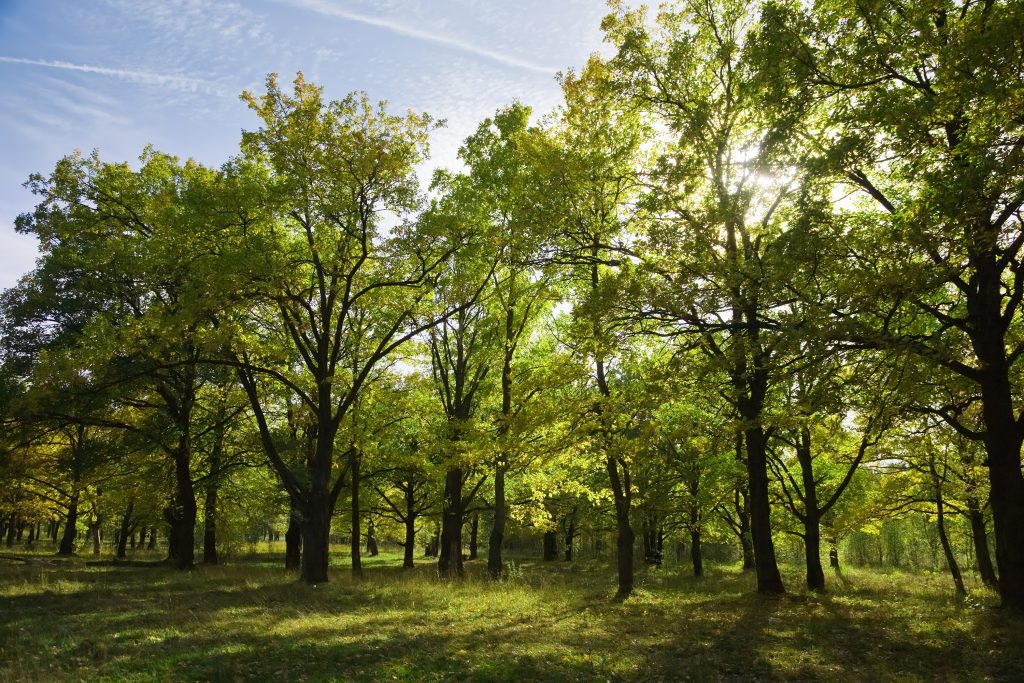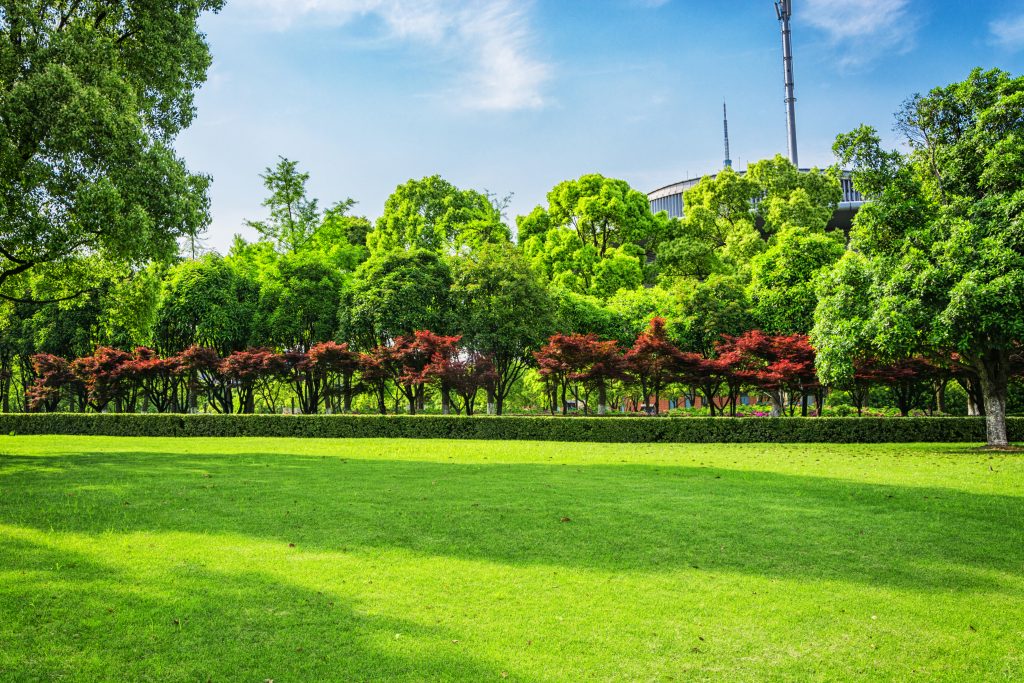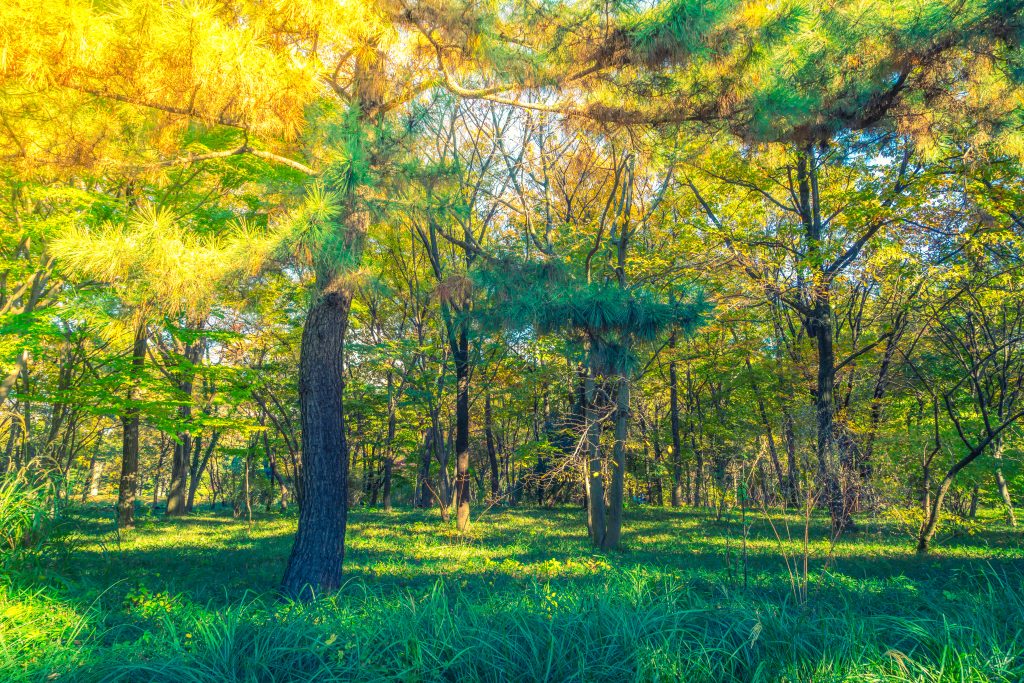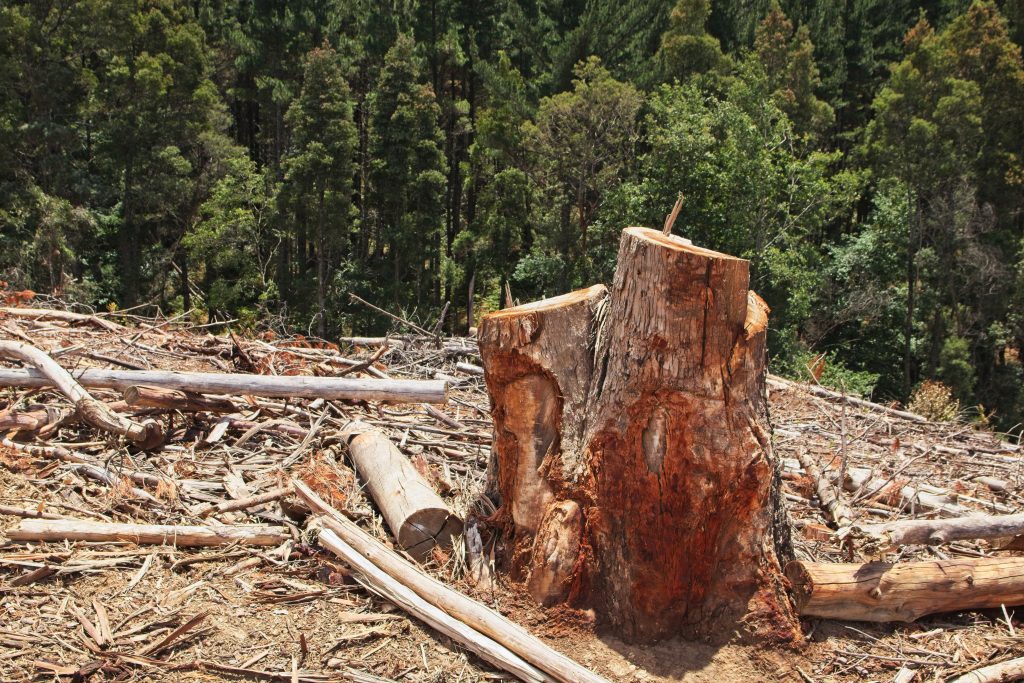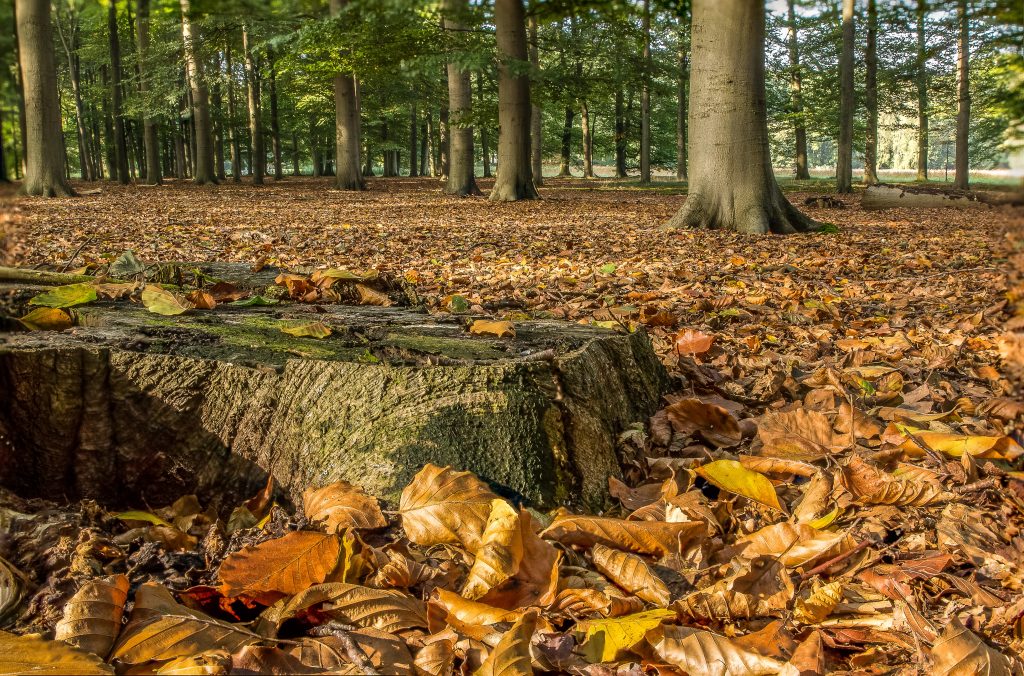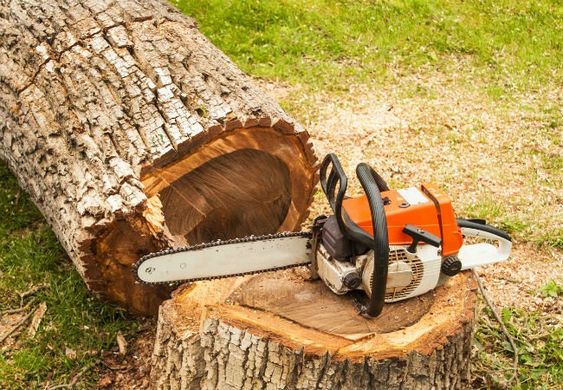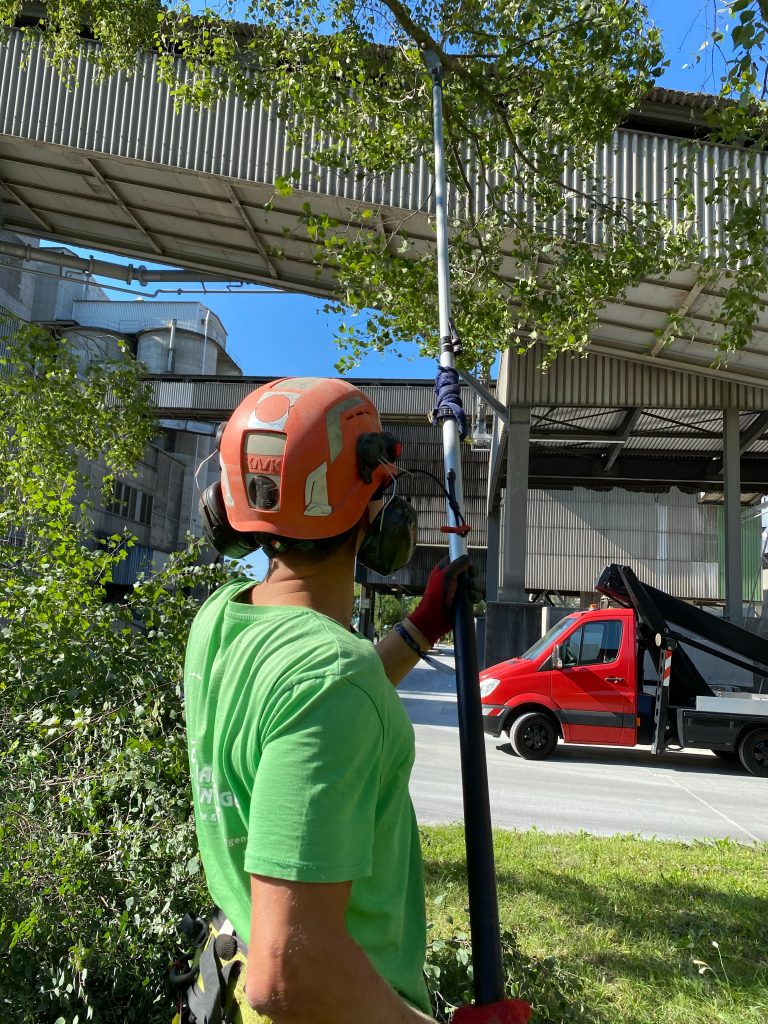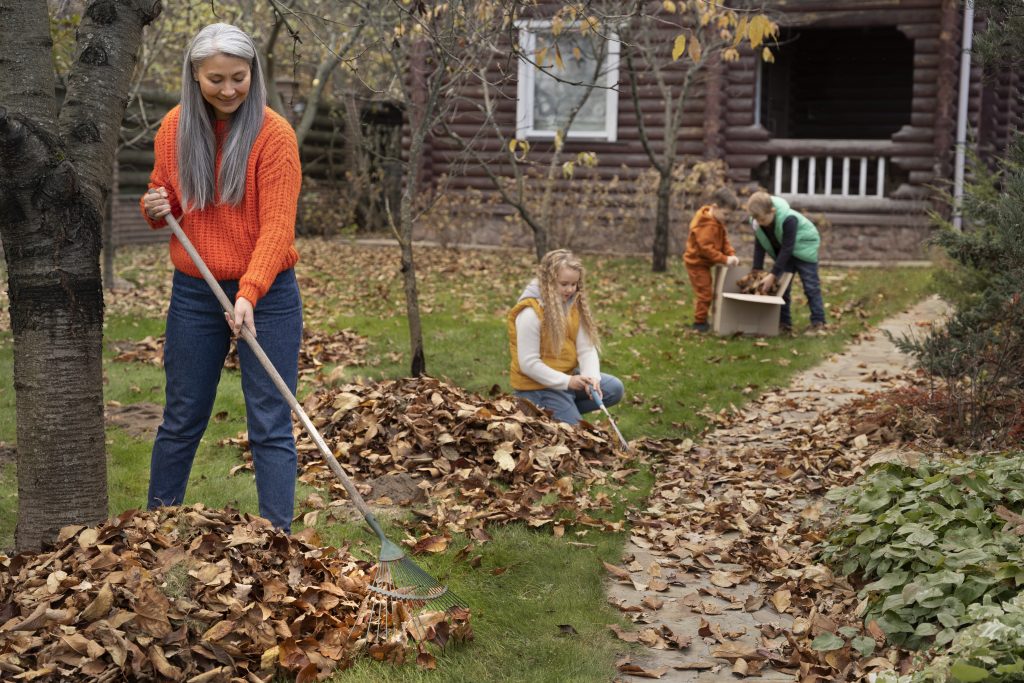When you’re searching for tree removal services, it’s crucial to consider the type of insurance they should have. Picture this: a massive tree looming dangerously close to your home, threatening to cause damage. In this scenario, you want to ensure that the tree removal company you hire has the necessary insurance coverage. This article will guide you through the importance of tree removal insurance, its history, and provide helpful tips and steps to follow when selecting the right insurance for your tree removal needs.
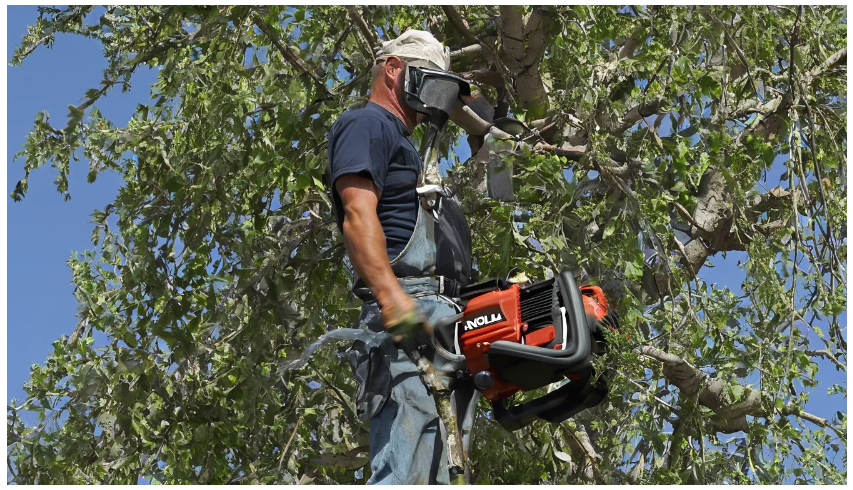
Key Takeaways
- Liability coverage is essential for tree removal services as it protects against property damage and bodily injury during the removal process.
- Worker’s compensation insurance is crucial for businesses with employees as it provides financial protection and support for work-related injuries or illnesses.
- Property damage insurance is essential for businesses with physical locations as it protects assets from unforeseen events and covers repairs or replacements for damaged property.
- Choosing the right insurance coverage, including liability, worker’s compensation, and property damage, is necessary to ensure adequate protection and meet coverage requirements for tree removal operations.
Introduction: Importance
Tree removal contractors should understand the importance of having the right insurance coverage. Not only does it protect you and your business, but it also provides numerous benefits. Here are some reasons why having the right insurance is crucial:
- Financial Protection: Insurance coverage ensures that you are financially protected in the event of any accidents or damages that may occur during tree removal. It can cover the costs of property damage, personal injury, or even legal expenses, saving you from potential financial burdens.
- Liability Coverage: Tree removal can be a risky job, and accidents can happen. Having the right insurance coverage helps protect you from liability if someone gets injured or their property is damaged during the tree removal process.
- Peace of Mind: Knowing that you have the proper insurance coverage in place gives you peace of mind. It allows you to focus on your work without constantly worrying about the potential risks and liabilities associated with tree removal.
Having the right insurance coverage is essential for tree removal contractors as it provides financial protection, liability coverage, and peace of mind. Understanding the importance of insurance will help you make informed decisions and ensure the success and longevity of your business. Now, let’s explore the history of tree removal insurance.
History of Tree Removal Insurance
During the early years, arborists didn’t have specific coverage for incidents related to cutting down trees. However, as the importance of tree removal insurance became evident, the history of this specialized coverage began. It started with general liability insurance policies that included coverage for property damage caused by tree removal. Over time, as the risks and complexities of tree removal became more apparent, specialized insurance policies were developed to provide comprehensive coverage for arborists.
The history of tree removal insurance is intertwined with the recognition of the unique risks involved in this profession. Arborists face potential hazards such as falling branches, equipment malfunction, and damage to surrounding property. Without proper coverage, these incidents can result in costly lawsuits and financial burdens.
Tree removal insurance has evolved to address the specific needs of arborists. Today, comprehensive policies cover not only property damage but also bodily injury, professional liability, and workers’ compensation. These policies ensure that arborists are protected from the potential financial consequences of accidents or mistakes that may occur during tree removal operations.
As you consider hiring a tree removal service, it is crucial to inquire about their insurance coverage. Make sure they have a comprehensive policy that covers all potential risks associated with tree removal. This will provide you with peace of mind, knowing that you are protected in the event of any unforeseen accidents.
Tips
When hiring a tree removal service, it is crucial to ensure that they have adequate liability coverage. This coverage will protect you in case of any accidents or damages that may occur during the tree removal process. Additionally, it is important to ensure that the tree removal service has worker’s compensation insurance to protect their employees in case of any injuries. Lastly, don’t forget to ask about property damage protection to ensure that any damage caused to your property during the tree removal process will be covered.
Adequate Liability Coverage
It’s important to make sure you’ve got enough liability coverage when looking for tree removal. Adequate coverage is crucial to protect yourself and your property from any potential accidents or damages that may occur during the tree removal process. There are different insurance policy types to consider when it comes to liability coverage. General liability insurance is a common policy that covers you in case of property damage or bodily injury caused by the tree removal work. It’s important to review the details of your insurance policy and ensure that it provides enough coverage for your specific needs. Now, let’s move on to the next important aspect of insurance when it comes to tree removal: worker’s compensation insurance.
Worker’s Compensation Insurance
Worker’s compensation insurance is necessary to protect yourself and your property during the tree removal process. It is of utmost importance to ensure that the tree removal company you hire has proper worker’s compensation insurance in place. This insurance coverage is designed to protect both the workers and the property owner in the event of any accidents or injuries that may occur during the tree removal process. Without this coverage, you could be held liable for any injuries sustained by the workers on your property, which could result in significant financial loss. To ensure that you are adequately protected, you should always ask the tree removal company for proof of worker’s compensation insurance before hiring them. This simple step can save you from potential financial and legal trouble down the line.
Moving forward, it is also important to consider property damage protection.
Property Damage Protection
To make sure your property is protected, ask the tree removal company if they carry insurance that covers property damage. Property damage liability is an important aspect of tree removal insurance. Accidents can happen during the tree removal process, and your property may suffer damage as a result. It is crucial to ensure that the company you hire has adequate insurance coverage limits to cover any potential property damage. This will protect you from bearing the financial burden of repairing or replacing any damaged structures or belongings. When discussing insurance with the tree removal company, inquire about their coverage limits for property damage. This information will help you determine if their insurance is sufficient to protect your property. Now, let’s delve into the traits of tree removal insurance.
Traits of Tree Removal Insurance
One important trait of tree removal insurance is that it covers any damages caused during the process. When it comes to removing trees from your property, accidents can happen. Branches may fall onto structures, equipment could cause damage, or the tree itself might land in an unexpected place. This is where tree removal insurance becomes crucial. By having this type of insurance, you can protect yourself from the potential financial burden of repairing or replacing any property that is damaged during the tree removal process.
In addition to covering damages, tree removal insurance also offers other important traits. For instance, it typically includes liability coverage in case someone gets injured while the tree removal is taking place. This can provide you with peace of mind, knowing that you won’t be held responsible for any accidents or injuries that may occur on your property.
Furthermore, tree removal insurance often includes coverage for the removal of fallen trees and debris. This means that if a tree falls on your property due to a storm or other unforeseen circumstances, the insurance will cover the cost of removing it, saving you from the hassle and expense of hiring a separate company for the job.
Steps in Choosing Tree Removal Insurance
First, you should start by researching different insurance providers and comparing their policies. It’s important to find the right insurance coverage for your tree removal business. Here are some steps and tips to help you in choosing tree removal insurance:

- Assess your specific needs: Determine the types of risks you face in your tree removal business. Consider factors such as the size of your company, the equipment you use, and the types of jobs you take on. This will help you understand the coverage you require.
- Shop around for quotes: Reach out to multiple insurance providers and request quotes based on your specific needs. Compare the coverage options, limits, deductibles, and premiums offered by different providers. Don’t forget to consider the reputation and financial stability of the insurance companies as well.
- Seek professional advice: Consulting with an insurance agent or broker who specializes in tree removal insurance can be beneficial. They can provide expert guidance and help you navigate the complexities of insurance policies, ensuring you make an informed decision.
Goals
Identify specific goals that align with your vision for success in the tree removal business. Setting clear goals is essential for guiding your actions and measuring your progress. Here are some tips to help you establish meaningful goals:
| Goals |
Tips |
| Increase customer base |
Develop a marketing strategy to attract new clients |
| Improve operational efficiency |
Invest in modern equipment and tools |
| Enhance safety measures |
Provide ongoing training for your team |
| Increase profitability |
Implement cost-effective practices and minimize waste |
| Build a reputable brand |
Focus on delivering high-quality services and customer satisfaction |
By setting these goals, you are creating a roadmap for the growth and success of your tree removal business. Increasing your customer base, improving operational efficiency, enhancing safety measures, increasing profitability, and building a reputable brand are all crucial aspects to consider.
As you move forward with these goals, it’s important to develop habits that prioritize safety. Safety should always be a top priority in the tree removal business, as it can prevent accidents and protect your team and clients.
Habits: Safety
To ensure safety in your tree removal business, make it a habit to regularly inspect and maintain your equipment. Safety measures should be a top priority in your daily operations. Conducting a thorough risk assessment is essential to identify potential hazards and implement appropriate safeguards.
Start by inspecting all your tools and equipment before each job. Check for any signs of wear and tear, such as loose bolts, damaged blades, or frayed cables. Replace or repair any faulty parts immediately. Additionally, ensure that all safety features, such as guards and emergency shut-off switches, are in proper working condition.
When operating heavy machinery, such as chainsaws or wood chippers, always wear the appropriate personal protective equipment (PPE). This includes a hard hat, safety goggles, ear protection, and sturdy work boots. Avoid loose clothing or jewelry that could get caught in the equipment.
Furthermore, establish clear protocols for your team regarding safe work practices. Train them on proper lifting techniques and the use of equipment. Encourage open communication so that any potential safety concerns can be addressed promptly.
A Real-Life Story
In the previous section, we discussed the importance of safety habits when it comes to tree removal. Now, let’s delve into a real-life story that exemplifies the significance of following proper safety protocols.
One case study involved a homeowner who hired a tree removal service without checking their insurance coverage. During the removal process, a large branch unexpectedly fell onto the neighbor’s car, causing significant damage. Unfortunately, the tree removal company did not have liability insurance, leaving the homeowner responsible for all the costs.
This real-life experience serves as a cautionary tale, highlighting the importance of verifying a tree removal company’s insurance coverage. It is crucial to ensure that they have both general liability insurance and workers’ compensation insurance. General liability insurance protects against property damage or injuries caused by the company’s actions, while workers’ compensation insurance covers the medical expenses of any workers injured on the job.
Quotes
Let’s start by comparing quotes from different tree removal companies to find the best price for your project. Getting multiple quotes is essential because it allows you to compare the costs and benefits offered by different companies. When requesting quotes, make sure to provide detailed information about your project, such as the size and type of tree, its location, and any specific requirements you may have. This will help the companies provide accurate and personalized quotes for your specific needs.
Comparing quotes can help you find the best price for your tree removal project, but it’s important to remember that price should not be the only factor you consider. While it’s tempting to choose the cheapest option, it’s crucial to also consider the quality of the services offered and the reputation of the company. Look for companies that have proper insurance coverage, such as liability insurance and workers’ compensation insurance. This will protect you from any potential damages or injuries that may occur during the tree removal process.
Now that you understand the importance of comparing quotes and considering the benefits of each company, let’s dive into some secrets to finding the right tree removal company for your project.
Secrets
Comparing quotes isn’t the only factor to consider when finding the right company for your tree removal project; you should also research their customer reviews and ask for references. However, there are a few secrets and habits you should be aware of when it comes to ensuring the safety of your tree removal process.
One secret to look for in a tree removal company is their commitment to safety. A reputable company will have safety as their top priority and will follow strict protocols to protect both their workers and your property. They will have well-trained staff who are knowledgeable about proper techniques and equipment usage.
Another habit to consider is the use of proper safety gear. A professional tree removal company will always ensure that their employees are equipped with the necessary safety gear, such as helmets, gloves, and safety glasses. This not only protects the workers but also shows their dedication to safety.
Lastly, a good tree removal company will have proper insurance coverage. This is crucial because accidents can happen, and you want to make sure that you are protected in case of any damage or injuries. A reputable company will have liability insurance to cover any potential accidents that may occur during the tree removal process.
Insights on Choosing Tree Removal Insurance
Make sure you understand the various options available to you when it comes to choosing the right tree removal insurance for your specific needs. When it comes to choosing coverage, there are several factors to consider. First, you need to assess the risks involved in your line of work. Are you mainly involved in residential tree removal or do you also handle commercial projects? This will help determine the level of coverage you need. Next, research different insurance providers and compare their offerings. Look for providers that specialize in tree removal insurance and have a good reputation in the industry. Consider the coverage limits, deductibles, and any additional services or benefits they offer. It’s important to have a comprehensive understanding of what is included and excluded in your policy. By carefully selecting your tree removal insurance, you can protect yourself and your business from potential risks and liabilities. Now that you know how to choose the right insurance, let’s explore the benefits of tree removal insurance.
Benefits of Tree Removal Insurance
When it comes to protecting your business, tree removal insurance offers peace of mind by covering potential risks and liabilities. As a tree removal company, it is important to recognize the benefits of having the right insurance coverage in place. One of the key benefits of tree removal insurance is that it provides financial protection in case of accidents or property damage that may occur during the tree removal process. With this insurance, you can rest assured knowing that any legal fees, medical expenses, or property repair costs will be taken care of.
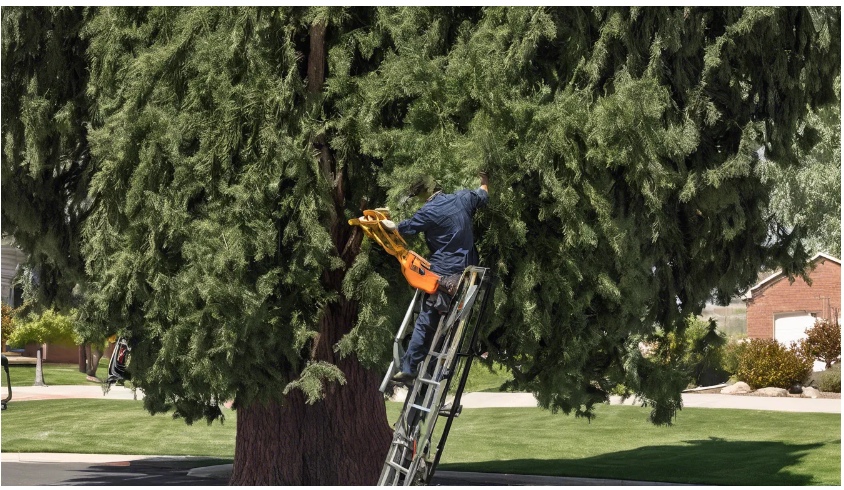
Another important benefit of tree removal insurance is that it protects your employees. Tree removal can be a dangerous job, and accidents can happen even with the most experienced workers. By having the right insurance, you can provide your employees with the necessary coverage in case of injury or disability. This not only safeguards their well-being but also protects your business from potential lawsuits and financial burdens.
Furthermore, tree removal insurance demonstrates professionalism and credibility to your clients. When potential customers see that you have the proper insurance in place, it gives them confidence in your ability to handle their tree removal needs safely and responsibly. This can lead to increased trust and more business opportunities for your company.
In conclusion, the importance of tree removal insurance cannot be overstated. It offers numerous benefits, including financial protection, employee coverage, and enhanced credibility. By investing in the right insurance coverage, you are ensuring the long-term success and security of your tree removal business.
Moving forward, there are valuable lessons that can be learned from those who have experienced the challenges and successes of tree removal insurance.
Lessons
When it comes to tree removal, there are three key types of insurance coverage you should be aware of. Firstly, liability insurance coverage protects you in case of any accidents or damages that may occur during the tree removal process. Secondly, worker’s compensation insurance ensures that you are protected if any workers are injured while performing the tree removal job. Lastly, property damage insurance covers any potential damage to your property or surrounding structures during the tree removal process. It’s important to have all three types of insurance coverage in place to protect yourself and your property.
Liability Insurance Coverage
Liability insurance coverage is essential for tree removal services. It provides adequate coverage and offers numerous insurance benefits. As a tree removal service provider, it is crucial to have liability insurance to protect yourself and your business from potential risks and claims. This type of insurance will cover any property damage or bodily injury that may occur during the tree removal process. With liability insurance, you can have peace of mind knowing that you are protected financially in case of any accidents or mishaps. However, liability insurance only covers damages to property and injuries to others, not your own employees. That is why the next important step is to ensure you have worker’s compensation insurance, which provides coverage for your employees in case of injuries or accidents on the job.
Worker’s Compensation Insurance
To protect your employees and ensure their well-being, it’s important to have worker’s compensation insurance in place. Worker’s compensation insurance is crucial for any business that has employees. It provides financial protection and support to employees who suffer work-related injuries or illnesses. By having worker’s compensation insurance, you can ensure that your employees receive the necessary medical treatment and compensation for lost wages while they recover. This insurance also protects your business from potential lawsuits related to workplace injuries. The benefits of worker’s compensation insurance are twofold – it safeguards your employees’ well-being and provides legal protection for your business. With worker’s compensation insurance, you can demonstrate your commitment to your employees’ safety and provide them with the assurance that they will be taken care of if an accident occurs. Now, let’s move on to another important type of insurance – property damage insurance.
Property Damage Insurance
If your business operates in a physical location, it’s essential to have property damage insurance to protect your assets from unforeseen events. Property damage claims can arise from a variety of situations, such as natural disasters, vandalism, or accidents. Having the right insurance coverage can help you recover financially when these events occur. Property damage insurance provides coverage for repairs or replacements of damaged or destroyed property, including buildings, equipment, inventory, and furnishings. It also typically covers liability claims if someone is injured on your premises. When selecting property damage insurance, it’s crucial to consider the coverage limits. Make sure the policy provides adequate protection for the value of your assets and potential liabilities. With property damage insurance in place, you can have peace of mind knowing that your business is safeguarded against unexpected damages. Now, let’s delve into the importance of establishing routines.
Routines
When searching for tree removal services, make sure they have the appropriate insurance coverage. Routines and safety habits are crucial factors to consider when hiring a tree removal company. A reputable company will have established routines and safety protocols in place to ensure the job is done safely and efficiently.
One important routine to look for is the use of proper safety equipment. A professional tree removal service will have employees who wear protective gear, such as hard hats, safety glasses, and gloves. They will also have the necessary tools and equipment to safely remove trees, such as chainsaws and ropes.
In addition to safety equipment, a good tree removal company will have a routine for assessing the area for potential hazards. This includes checking for power lines, nearby structures, and other obstacles that could pose a danger during the removal process. By carefully assessing the area beforehand, they can develop a plan to safely remove the tree without causing damage to surrounding property or risking injury to themselves or others.
Pros and Cons
Now that you have established a routine for your tree removal tasks, let’s delve into the pros and cons of this process. One of the major benefits of having a routine is that it brings a sense of organization and structure to your work. By following a set schedule, you can ensure that all necessary tasks are completed in a timely manner. Additionally, routines can help improve efficiency and productivity as you become familiar with the steps involved and can streamline your workflow.
However, it’s important to recognize that routines can also have their drawbacks. One potential con is that they can sometimes lead to complacency. Following the same steps over and over again may cause you to overlook potential issues or fail to adapt to changing circumstances. It’s crucial to regularly reassess your routine and make adjustments as needed to ensure you are consistently delivering high-quality tree removal services.
Dos and Dont’s
Let’s explore the dos and don’ts when it comes to efficiently and safely removing trees from your property. Taking down a tree can be a complex and potentially dangerous task, so it’s important to follow some tips and tricks to ensure a successful outcome. Here are some dos and don’ts to keep in mind:
| Dos |
Don’ts |
| Hire a professional |
Attempt it yourself |
| Obtain necessary permits |
Neglect to check local regulations |
| Assess the tree’s condition |
Remove healthy trees without reason |
| Use proper safety equipment |
Neglect to wear protective gear |
| Plan the removal process |
Rush the job |
| Dispose of the tree properly |
Leave debris behind |
Mistakes to Avoid
It’s important to be aware of common mistakes to avoid during the tree removal process. One of the most significant errors people make is not having the right insurance policies in place. Tree removal can be a risky task, and accidents can happen. Without adequate insurance coverage, you could be liable for any damages or injuries that occur during the removal process.
To avoid this mistake, make sure to check if the tree removal company you hire has proper liability insurance. This insurance should cover any damages to your property or injuries to the workers. Additionally, it’s crucial to verify that the company has workers’ compensation insurance to protect their employees in case of any accidents.
Another common mistake is not obtaining the necessary permits for tree removal. Depending on your location, you may need to obtain permits from your local municipality or homeowner’s association before removing a tree. Failure to do so can result in fines and legal complications.
By being aware of these common mistakes and taking the necessary precautions, you can ensure a smooth and safe tree removal process.
Now that you know the common mistakes to avoid during tree removal, let’s move on to the key takeaways from this discussion.
Key Takeaways
One important thing to remember is to check if the tree removal company you hire has the necessary permits for the job. When it comes to tree removal, there are a few key takeaways to keep in mind. First and foremost, the importance of hiring a company with the right permits cannot be overstated. This ensures that the company is operating within the legal framework and is qualified to perform the job safely and efficiently.
Another key takeaway is the importance of insurance. Tree removal can be a risky endeavor, and accidents can happen. It is crucial that the company you choose has proper insurance coverage to protect both their workers and your property. This will provide you with peace of mind knowing that you are not held liable for any potential accidents or damages that may occur during the tree removal process.
In addition to permits and insurance, it is also important to consider the experience and expertise of the tree removal company. Look for a company that has a proven track record and positive customer reviews. This will give you confidence in their ability to handle the job with professionalism and care.
Specific Action Steps for Choosing Tree Removal Insurance
When choosing tree removal insurance, it is important to consider coverage requirements for contractors, liability and property protection, and adequate worker’s compensation. Contractors should have comprehensive coverage that protects against property damage or bodily injury caused by their work. Liability and property protection should include coverage for damage to third-party property and injuries sustained by others on the job site. Additionally, adequate worker’s compensation coverage ensures that employees are protected in the event of work-related injuries or illnesses.
Coverage Requirements for Contractors
Do you know what type of insurance you should have as a contractor for tree removal? It’s important to understand the coverage requirements and contractor qualifications to ensure you have the right insurance in place. As a tree removal contractor, you will need to have a comprehensive general liability (CGL) insurance policy. This type of insurance will protect you against any claims or damages that may arise during tree removal operations. Additionally, you may also need to consider obtaining workers’ compensation insurance, especially if you have employees working for you. This will provide coverage for any injuries or accidents that occur on the job. By meeting these coverage requirements and contractor qualifications, you can protect yourself and your business from potential risks and liabilities. Now, let’s dive into the next section about liability and property protection.
Liability and Property Protection
Now that you understand the coverage requirements for contractors, let’s delve into the importance of liability and property protection when it comes to tree removal. As a homeowner, it is crucial to ensure that the tree removal company you hire has adequate coverage in their insurance policies. This is because accidents can happen during the tree removal process, and you want to protect yourself from any potential liability or property damage. Adequate coverage means that the company’s insurance policies should include general liability insurance and property damage insurance. General liability insurance will cover any injuries that may occur on your property, while property damage insurance will protect your property from any damages caused during the tree removal process. With these types of insurance in place, you can have peace of mind knowing that you are protected. Moving forward, let’s discuss the importance of adequate worker’s compensation for tree removal companies.
Adequate Worker’s Compensation
To ensure your protection, it’s important to make sure the tree removal company you hire has sufficient worker’s compensation coverage. Adequate coverage for worker’s compensation is crucial because it protects you from potential liability in case a worker is injured while working on your property. Worker’s compensation provides medical benefits, wage replacement, and rehabilitation services to injured workers, ensuring they receive the support they need. When considering the cost of hiring a tree removal company, it’s essential to factor in the cost of worker’s compensation coverage. A reputable company will have adequate coverage in place, which may result in slightly higher prices, but it’s worth it for your peace of mind. Remember, choosing a company with sufficient worker’s compensation coverage is a wise investment in both your safety and financial well-being.
Frequently Asked Questions
How Much Does Tree Removal Insurance Typically Cost?
When looking for tree removal, you’ll want to consider the cost factors and coverage options of the insurance. Typically, the cost of tree removal insurance can vary depending on factors such as coverage limits, location, and the size of the tree being removed.
Are There Any Specific Qualifications or Certifications Required for Tree Removal Insurance?
When looking for tree removal, it’s important to ensure that the company you choose has the proper certifications required and qualifications needed. This will give you peace of mind knowing that the job will be done safely and professionally.
What Are the Common Risks or Liabilities Covered by Tree Removal Insurance?
When looking for tree removal, you need insurance that covers common risks and liabilities. This includes property damage, injuries, and accidents. It’s crucial to ensure you’re protected from potential mishaps.
Can Tree Removal Insurance Also Cover Damage Caused to Neighboring Properties During the Removal Process?
Yes, tree removal insurance can cover damage caused to neighboring properties during the removal process. The coverage extent may vary depending on the insurance provider, so it’s important to carefully review their policy before making a decision.
Are There Any Limitations or Exclusions to Tree Removal Insurance Coverage That One Should Be Aware Of?
When looking for tree removal insurance, you should be aware of any limitations or exclusions in the coverage. It’s important to understand what is and isn’t covered to avoid any surprises. Additionally, consider the cost of the insurance to ensure it fits your budget.
If you need a tree service in Utah, you can call:
Truco Services, Inc.
4640 Commerce Drive
Murray, Utah 84107
(801) 466–8044
https://truetreeservices.com/




